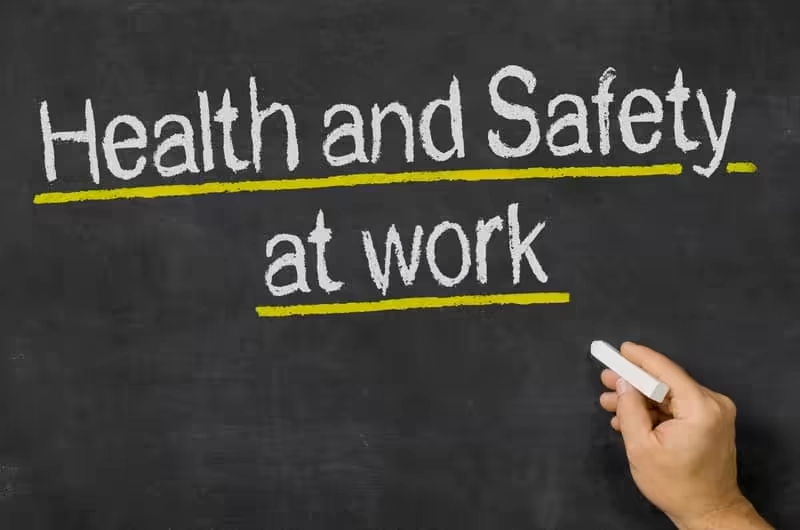Health and safety are crucial, but surely something like labels that point out ‘caution’ or doing inspections on equipment before every single use can be a bit too much, no? In fact, why not just skip it this time and do the inspection every other shift?
This is probably the kind of argument most employees or managers might use if they ‘just want to get the work done’ without any safety regulations getting in the way, but the reality is that this is exactly the kind of intentional neglect that causes most accidents and injuries.
In this content piece, we will talk about how the stringent procedures and ‘caution-first’ approach to health and safety policies should always be followed.
Health and Safety Policies – Why Companies Neglect Them
More often than not, companies consider safety to be an addition to the main task rather than a fundamental part of it. That means to ‘get the job done quicker,’ they often tend to leave safety practices behind and neglect them.
While accidents do happen, research indicates that it is often intentional neglect that leads to accidents, especially in injury-prone industries, such as construction.
Other than to reduce the time it takes, companies also neglect safety to save on costs, despite overwhelming evidence on the contrary—that it can be more expensive in the long run, as safety is not something you do once, and your job is done. It has to be done, constantly, and with painstaking accuracy. There is no ‘magic bullet’ to remedy the situation, as one article describes it.
Sometimes, though, in certain situations, companies might be incentivized to reduce costs simply by ignoring safety. This is mostly found in very large mega-corporations with tens of thousands of workers, as explained by Derek Beres on workplace safety. Here, though a lack of regulations was mentioned as one of the reasons for ignoring safety being incentivized.
Another crucial driver is weak accountability, where near-misses are not recorded and supervisors treat safety checks as optional. Emergency readiness depends on clear signage, accessible first-aid kits, and a properly maintained defibrillator cabinet positioned where workers can reach it within minutes. Embedding these practices into daily routines reduces ambiguity and helps prevent lapses when schedules tighten.
Companies Need Safety Culture, and It Starts at the Top
But what if the regulations are in place already? A case study by the Workplace Safety and Health Council (WSHC) in Singapore detailed that even with proper regulations and continued effort, accidents continued to happen.
What is often missing in such reports, is why was a safety rule ignored in the first place. Whether or not the employee was neglectful in that instance does not matter as much as the intent of their neglect matters. Were they doing what they were told? Could they follow safety rules without any possibility of being reprimanded? Were their supervisors, managers, etc., properly enforcing and following those rules?
All these things reflect the safety culture of the company. A proper safety culture can only thrive if it is followed by the people from the top positions of the company to the on-site workers who face these accidents.
Related: A Beginner’s Guide to HSE: Understanding the Basics of Health and Safety
Health and Safety Can Often Depend on How Its Implemented
Even if the policies and procedures are in place, regardless of whether it is a ‘safety culture’ in the company or not, one question is also very important.
Are the safety procedures easy to follow?
If safety procedures, reporting tools, and ‘paperwork’ type tasks are too hectic or difficult, employees might simply not work on them. Even within following a caution-first approach, one of the fundamentals of health and safety systems is to always look for ways they can be improved upon.
Moreover, if an employee has limited access to these reporting tools, they can pose a problem as well. For example, if a worker has to report safety issues to their supervisor, and the supervisor does not forward that discrepancy to the relevant personnel, it can lead to neglect, unforeseen accidents, and is a procedure that goes against the ‘if you see something, say something’ mantra.
Policies Are Not Enough – Keep Employees Trained
Just like health and safety, training is not a one-and-done procedure. Organizations need to train their employees regularly regarding safety procedures.
For general emergency procedures, bi-annual or even quarterly training is the norm. Fire safety drills are often held twice per year in most companies. The frequency of training sessions can depend, but they should be frequent. Even regular training sessions for general health and safety courses can be beneficial to ensure new employees are up to date and existing employees can refresh their memory on the processes.
Not every company can put in a ‘leading by example’ approach, so regular training can be the next best thing, regardless of whether it is on-site or online.
Related: 9 Career Paths In Emergency Management
Conclusion
Health and safety are simultaneously one of the most important and ignored aspects of a workplace. From employees doing the work to executives making the decision, policies on safety are constantly being broken.
Here in this content piece, we have discussed why that happens, and how it can be avoided.
Related: The Environmental Impact of Hand Soaps Why Choose Safer and Eco-friendly Options



